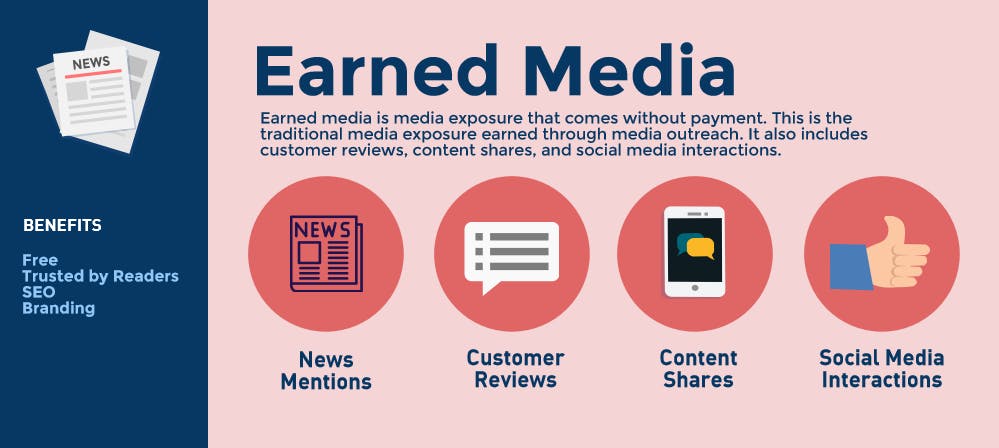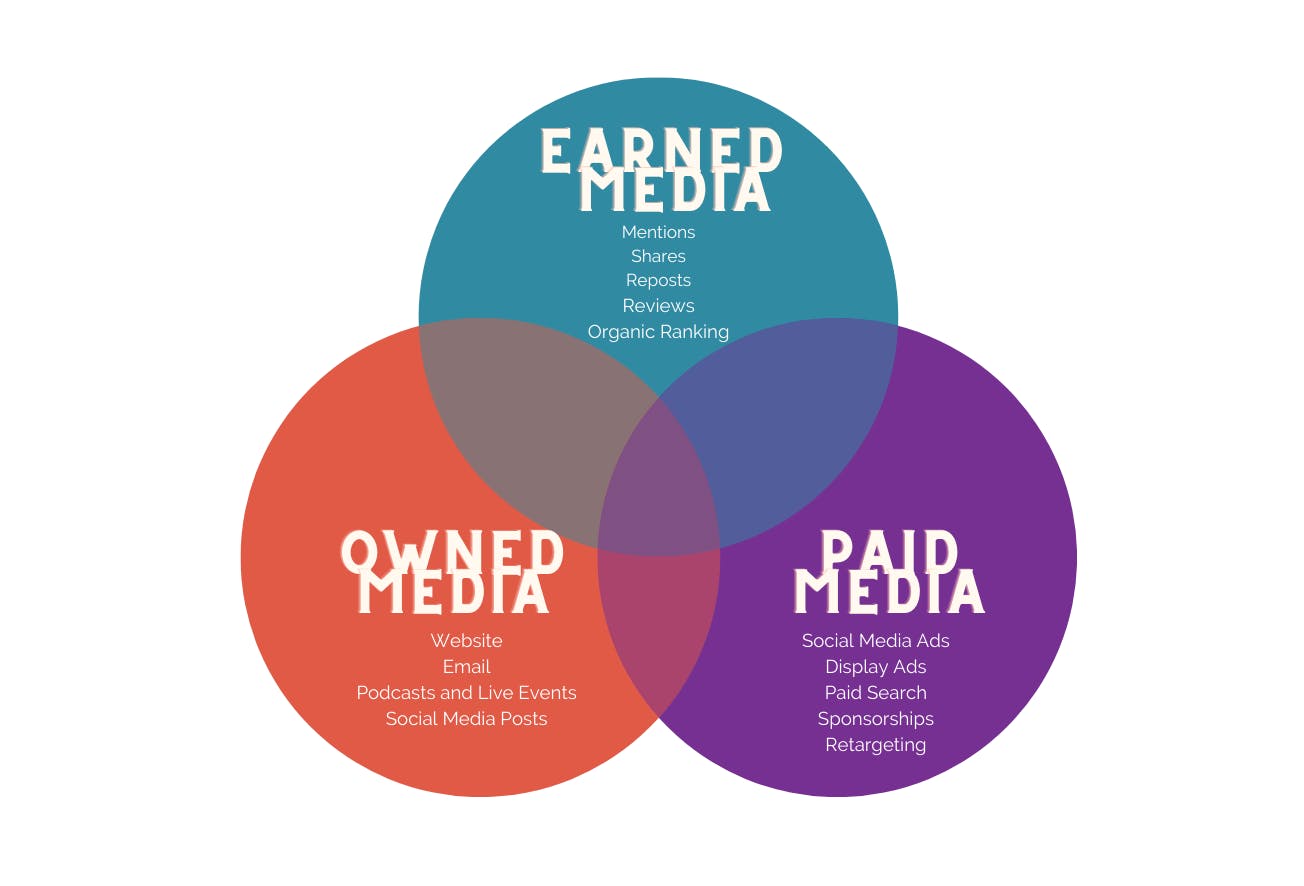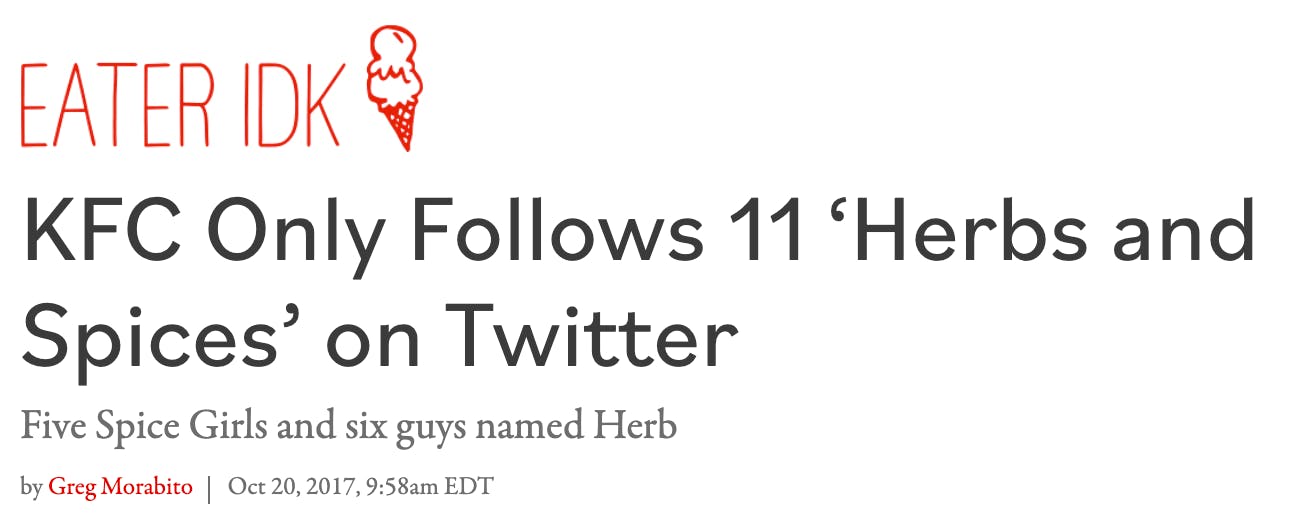What is earned media? Strategy and examples
Dec 5th, 2023

The BMV Digital Brand Index research states that earned media is how most US consumers first learn about new brands. In the same study, earned media was identified as the primary driver for action. Positive news stories or blog articles, according to 30% of customers, would influence their shopping decisions. In addition, according to 28% of respondents, social media posts from friends and family would have the same impact.
This demonstrates the power of the earned media. Furthermore, according to a study by YouGov, nine out of ten customers believe that earned media is the most reliable source of information. In contrast to owned and paid media, earned media fosters the most trust between a brand and its audience. Once the message is filtered through a third party, its credibility immediately increases.
In this article, we will explain the concept of earned media, describe how it compares to owned and paid media and walk you through the ways to earn it. We will also provide some valuable examples of earned media.
What is earned media?
Earned media is brand mentions or coverage obtained through non-paid means. It is content about a person or business created by a third party. Examples of earned media are publications in the press, interviews with company representatives, or bylined articles in trade journals. It can also include word of mouth, customer testimonials, social media sharing, or podcast mentions.
Earned media is a vital component of modern marketing and communication strategies because of its ability to build trust and brand recognition. Unlike paid media, which involves purchasing advertising space, earned media is free and results from the organic distribution of positive content or mentions about a brand, product, or service. When a brand is featured in a news article, mentioned by an influencer, or recommended by satisfied customers, it gains a level of credibility that is difficult to achieve through traditional advertising.

Consumers tend to perceive earned media as unbiased and genuine since it relies on the recommendations of third-party sources rather than on the self-promotion of paid advertising. This trust-building aspect is crucial when customers are increasingly skeptical of overt marketing messages and seek honest relationships with brands.
Furthermore, earned media can significantly expand a brand's reach and visibility. As content gets shared across social media platforms, blogs, and news outlets, it reaches audiences that might not have been exposed to the brand through other means. The viral nature of social media sharing can result in a snowball effect, where a single positive mention can lead to widespread attention and brand recognition.
The other crucial components of an effective inbound marketing strategy are owned and paid media. All three elements are integral parts of the whole and form the ideal marketing mix.
Earned media vs owned media vs paid media
Owned media is the channels and platforms that a brand has complete control over. These are the digital assets owned by the brand, such as its website, social media profiles, blogs, newsletters, and mobile apps. Owned media allows brands to influence the content they publish, ensuring consistency in messaging and branding. It serves as a means to engage with existing customers, share relevant information, and provide value to the audience.
The advantage of owned media is direct engagement with consumers, which builds customer loyalty. What is more, content on owned media platforms has a longer lifespan than a single social media post or news mention. In addition, brands can better allocate costs compared to paid media.
The cons of owned media include limited reach, initial investments, and engagement challenges. While owned media heavily relies on existing audiences, gaining new followers or readers can be challenging without additional promotional efforts. Moreover, building and maintaining owned media platforms requires an investment in terms of time, resources, and expertise. While you have control over content, engagement and interaction are subject to audience interest and responsiveness.

Paid media refers to promotional efforts in which a brand or organization pays to place its content or advertisements on various platforms to reach a specific audience. Unlike earned media, which relies on organic mentions and shares, and owned media, which involves materials published on owned channels, paid media requires an investment to ensure the content reaches the right people. Examples of paid media are display advertising, search engine advertising, influencer partnerships, and sponsored content.
Paid media has the following advantages:
- It allows precise audience targeting based on demographics, interests, and behaviors, which helps your content reach the right people.
- Paid media campaigns can generate quicker and more measurable results than organic methods.
- This type of media can increase the reach of your content, which is especially important for time-sensitive campaigns or promotions.
- Finally, brands can plan and predict exposure levels based on the budget allocated to paid media efforts.
Despite all the advantages, paid media requires a budget, and if not managed effectively, costs can increase without proportional benefits. Furthermore, consumers are increasingly adept at ignoring or avoiding ads, which might lead to lower engagement or click-through rates. Paid media is often perceived as advertising, which might reduce its impact compared to more authentic earned or owned media. In addition, the effects of paid media campaigns can be short-lived, especially if not followed up with consistent efforts.
Let us also consider the pros and cons of earned media. The main advantage of positive coverage from reputable media outlets or influencers is building brand credibility. Since the brand does not directly control it, earned media appears more authentic and less like traditional advertising.
While it may require effort to create shareable content or engage with influencers, earned media is a cost-effective way to increase brand visibility. Moreover, earned media can spread virally, reaching new and broader audiences beyond your existing customer base.
The disadvantage of earned media is limited control over the content and messaging. Positive coverage is not guaranteed, and negative coverage can also occur. Relying solely on earned media can be risky, as you cannot manage when and how your brand gets mentioned. In addition, building relationships with media outlets and influencers takes time and effort, so the results might not be immediate.
Once you have a clear idea of the three types of digital media, you can compare their advantages and disadvantages and decide which is worth paying more attention to. We will focus on earned media and the ways to get it further in this article.
Earned media strategy
Now, we will explain how to develop a successful earned media strategy that helps you achieve your goals. Here are some suggestions to improve your chances of gaining earned media.
Define your goals
Any effective marketing strategy requires clear goals. Therefore, you should consider your primary objectives. These can include increasing the visibility of your brand, promoting a particular product or service, reaching a new target demographic, or improving engagement with your pages. Once you identify your goals, you will be able to choose the most suitable channels for executing your earned media strategy.
For example, if your objective is to generate awareness of your brand, you might contact regional media and provide information about the event you are organizing. To improve engagement, you can share user-generated content on your social media platforms and mention the author. To position yourself as an authority, you write guest posts for a website related to your industry.
Research your audience and influencers
This step is critical if your goal is to reach a new demographic. At this point, you need to decide which audience you want to address. Analyze the platforms on which your target customers are most active.
Conduct research to identify the most popular topics, best-performing content, and influencers writing for your industry. For these purposes, you can use specific tools like BuzzSumo, Ahrefs, or Social Animal. Seek out media professionals, review sites, and fans willing to collaborate with you because they genuinely enjoy your brand and share your values.
Build relationships with customers and brand advocates
Develop relationships with media experts, clients, influencers, and content creators. To increase the reach of your business, send relevant and targeted pitches to journalists. Before every new product launch, get in touch with media professionals and describe the newsworthy event in the email. You can also use Help a Reporter Online, a resource that links sources with journalists.
Write a comment on social media to express your appreciation whenever a consumer compliments your product. Acknowledge and address both positive and negative reviews by expressing gratitude or offering help to resolve any issues.
Encourage people to discuss or distribute information about your company, whether it is a new research or your latest award. It demonstrates that they have a close connection with a renowned brand, so fans and supporters of your company often feel flattered that you have asked them for anything and are ready to contribute. These people might be more willing to share your news or content with their positive opinions, unlike traditional media.
To generate earned media from content creators, consider providing your expertise for interviews on their platforms or sharing your content they can promote. When reaching out to influencers you haven't previously contacted, it's essential to conduct prior research. Understand the type of content they usually create, identify their audience's preferences, and determine the most crucial topics. With this information in mind, create a personalized pitch. In addition, repost any content that mentions your business to increase the reach of these publications.
Create engaging content
The key to success lies in creating content that resonates with your target market. These materials should not only be informative or promotional but also shareable and engaging.
These are materials that people willingly distribute within their social circles, whether it's an eye-catching meme, an educational infographic, high-quality product photos, or promotional articles for an upcoming event. When your content strikes the right chord, consumers become advocates who voluntarily reshare and retweet your content.
Establish your company as a thought leader by sharing your expertise through blog posts, social media publications, and other types of owned content. As you position yourself as an expert, you'll become a trusted go-to source within your industry.
Participate in trade shows and conferences
Participating in trade shows and conferences can be a strategic move to gain earned media and brand promotion. These events provide a platform to showcase your brand's offerings, connect with industry professionals, and capture the attention of journalists and influencers.
According to research conducted by the Content Marketing Institute, a significant 81% of marketers incorporate live events into their content marketing strategy. Interestingly, live events emerged as the most favored and successful tactic among product marketers, surpassing all other strategies in terms of effectiveness.
The main task is to craft compelling presentations that highlight your brand's expertise and unique selling points. You need to present a topic that is relevant to your brand and provides value to the event's attendees. Make sure your presentation materials, such as slides and handouts, include your Twitter handles, relevant hashtags, and links. This makes it more convenient for your audience to share the content of your presentation across their networks.
Organize meetings and events for your fans
Organizing events and meetings for your dedicated fan base can be a powerful strategy for earning media attention. Understanding your audience's needs and preferences and tailoring your content and activities to their interests increases the likelihood of them enthusiastically sharing their participation in your events across social media and other channels.
Creating a buzz around your events is essential for gaining earned media. Employ strategic marketing efforts such as teaser campaigns, exclusive previews, and behind-the-scenes glimpses to generate excitement among your fans and the broader community. Encourage attendees to share their experiences on social platforms by incorporating event-specific hashtags and interactive elements.
Engaging with media outlets and influencers within your niche market can further increase your event's reach. Reach out to journalists, bloggers, and social media influencers who cover topics related to your event's themes or your brand's industry. Offer them exclusive access, interviews, or sneak peeks to entice them to attend and cover your event.
Send your product for reviews
Sending your product for reviews is a great strategy for enhancing your brand's visibility. First and foremost, identify credible and relevant reviewers in your industry or niche. These could be influential bloggers, YouTubers, or journalists. Ensure that your product aligns with their area of expertise and audience to maximize the impact of the review.

When reaching out to potential reviewers, craft a compelling pitch highlighting your product’s unique features and benefits. Emphasize what sets it apart from the competition and why their audience would find it valuable. Offering a clear value proposition, whether an exclusive first look or access to limited-edition releases, can pique the reviewer's interest.
Once the reviews are published, actively promote them across your own channels, including social media, email newsletters, and your website. Encourage satisfied customers to share their feedback as well. Engage with the reviewers by expressing gratitude for their evaluation and addressing any questions or concerns. This approach can lead to long-term relationships with influencers, increasing the chances of future collaborations and continued earned media exposure.
We have discussed different methods to generate earned media that you can use to market your product. Further, we will provide examples of the notable brands that have already applied these techniques in practice.
Examples of earned media
Let us consider some examples illustrating how companies gain media attention through their marketing initiatives.
KFC
KFC skillfully used its Twitter account to obtain earned media. The company secretly followed 11 people and waited for someone to recognize that it was a play on their "secret recipe”: five spices for the Spice Girls and six herbs for individuals named Herb. As a result, the tweet attracted a lot of attention and helped KFC get media coverage in marketing-focused magazines and news outlets.

Ahrefs
Tim Soulo, Ahrefs' Chief Marketing Officer, known for creating SEO tools, accomplished his 2019 objective of being a guest on 20 different podcasts. He shared on Medium that he pursued this goal as a simple method for gaining brand visibility. Participating in each podcast episode required approximately two hours of his time, but he received the opportunity to showcase himself, his ideas, his product, and his business to thousands of prospective customers.
Porch
The home repair firm used its internal data to determine the ZIP codes within each state that allocated the highest expenditure towards home maintenance, along with identifying the most costly types of repairs. They then transformed these insights into an infographic and presented it to various publications, framing it as data that would captivate and benefit their readers. Ultimately, the campaign resulted in 188 pieces of media coverage for Porch in newspapers like the Washington Post and has established it as a trustworthy source for articles in magazines like The Balance.
In conclusion, earned media is an essential component of any effective growth marketing strategy. By engaging with your audience, collaborating with influencers, creating captivating content, and effectively utilizing various channels, you can harness the power of earned media to enhance your brand's visibility, credibility, and reach. Embrace its opportunities, build meaningful relationships, and let your brand's story shine through the voices of your satisfied customers and advocates.
